

August 13 – 19: “How do you write, from the seat of your pants or are you a planner?”
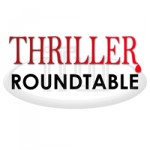 Plotter or pantser? Since early man began scratching stories onto the walls of caves, the age-old question has been asked: How do you write, from the seat of your pants or are you a planner? This week ITW Members Ann Simas, James Hilton, Linda Bennett Pennell, Nick Kolakowski, Lynn Cahoon, Charles Salzberg, Kellye Garrett, Mysti Berry, Richard Mabry, David Bell, David Simms, Frank Zafiro, Ronie Kendig and Lane Stone will take a crack at it. Scroll down to the “comments” section to follow along!
Plotter or pantser? Since early man began scratching stories onto the walls of caves, the age-old question has been asked: How do you write, from the seat of your pants or are you a planner? This week ITW Members Ann Simas, James Hilton, Linda Bennett Pennell, Nick Kolakowski, Lynn Cahoon, Charles Salzberg, Kellye Garrett, Mysti Berry, Richard Mabry, David Bell, David Simms, Frank Zafiro, Ronie Kendig and Lane Stone will take a crack at it. Scroll down to the “comments” section to follow along!
 Lynn Cahoon is the author of the New York Times and USA Today best-selling Tourist Trap cozy mystery series. Guidebook to Murder, book 1 of the series, won the Reader’s Crown for Mystery Fiction in 2015. She also pens the Cat Latimer series available in mass market paperback. This year, she’s releasing Who Moved my Goat Cheese in March as part of the new Farm to Fork series. She also writes romance under Lynn Collins. She lives in a small town like the ones she loves to write about with her husband and two fur babies.
Lynn Cahoon is the author of the New York Times and USA Today best-selling Tourist Trap cozy mystery series. Guidebook to Murder, book 1 of the series, won the Reader’s Crown for Mystery Fiction in 2015. She also pens the Cat Latimer series available in mass market paperback. This year, she’s releasing Who Moved my Goat Cheese in March as part of the new Farm to Fork series. She also writes romance under Lynn Collins. She lives in a small town like the ones she loves to write about with her husband and two fur babies.
 James Hilton lives in the rugged but beautiful North of England. He is currently working on the next book in the ‘Gunn Brothers Thriller’ series from Titan Books and also researching material for the first book in a new YA series. James trained in the martial arts since the age of 11. James is currently ranked as a 4th dan Blackbelt. His other passions include visiting Florida and the Caribbean, reading horror, suspense and action thrillers.
James Hilton lives in the rugged but beautiful North of England. He is currently working on the next book in the ‘Gunn Brothers Thriller’ series from Titan Books and also researching material for the first book in a new YA series. James trained in the martial arts since the age of 11. James is currently ranked as a 4th dan Blackbelt. His other passions include visiting Florida and the Caribbean, reading horror, suspense and action thrillers.
 Mysti Berry has short fiction published in many anthologies including Ellery Queen Mystery Magazine, and should be published again in 2019 in Alfred Hitchcock Mystery Magazine, and just published a charity anthology Low Down Dirty Vote, with stories by Catriona McPherson, James W. Ziskin and many other talented writers. She lives in San Francisco with graphic novelist Dale Berry and three black rescue cats, and she’s looking forward to ThrillerFest 2019.
Mysti Berry has short fiction published in many anthologies including Ellery Queen Mystery Magazine, and should be published again in 2019 in Alfred Hitchcock Mystery Magazine, and just published a charity anthology Low Down Dirty Vote, with stories by Catriona McPherson, James W. Ziskin and many other talented writers. She lives in San Francisco with graphic novelist Dale Berry and three black rescue cats, and she’s looking forward to ThrillerFest 2019.
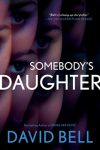 David Bell is a bestselling and award-winning author whose work has been translated into multiple foreign languages. He’s currently an associate professor of English at Western Kentucky University in Bowling Green, Kentucky, where he directs the MFA program. He received an MA in creative writing from Miami University in Oxford, Ohio, and a PhD in American literature and creative writing from the University of Cincinnati. His previous novels are Bring Her Home, Since She Went Away, Somebody I Used to Know, The Forgotten Girl, Never Come Back, The Hiding Place, and Cemetery Girl.
David Bell is a bestselling and award-winning author whose work has been translated into multiple foreign languages. He’s currently an associate professor of English at Western Kentucky University in Bowling Green, Kentucky, where he directs the MFA program. He received an MA in creative writing from Miami University in Oxford, Ohio, and a PhD in American literature and creative writing from the University of Cincinnati. His previous novels are Bring Her Home, Since She Went Away, Somebody I Used to Know, The Forgotten Girl, Never Come Back, The Hiding Place, and Cemetery Girl.
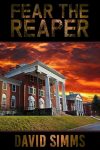 David Simms lives in the Shenandoah Valley of Virginia with his wife, son, and animals. He works as a teacher, counselor, music therapist, ghost tour guide, book reviewer, and founding guitarist in the Killer Thriller Band/Slushpile band. FEAR THE REAPER is his second novel.
David Simms lives in the Shenandoah Valley of Virginia with his wife, son, and animals. He works as a teacher, counselor, music therapist, ghost tour guide, book reviewer, and founding guitarist in the Killer Thriller Band/Slushpile band. FEAR THE REAPER is his second novel.
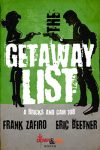 Frank Zafiro was a police officer from 1993 to 2013. He is the author of more than 20 novels, mostly crime fiction, including the River City series and the Ania series. In addition to writing, Frank hosts the crime fiction podcast Wrong Place, Write Crime. He is an avid hockey fan and a tortured guitarist. He currently lives in Redmond, Oregon.
Frank Zafiro was a police officer from 1993 to 2013. He is the author of more than 20 novels, mostly crime fiction, including the River City series and the Ania series. In addition to writing, Frank hosts the crime fiction podcast Wrong Place, Write Crime. He is an avid hockey fan and a tortured guitarist. He currently lives in Redmond, Oregon.
Nick Kolakowski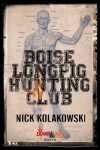 is the author of “Boise Longpig Hunting Club” (Down & Out Books) and “A Brutal Bunch of Heartbroken Saps” (Shotgun Honey). His crime fiction has appeared in Thuglit, Crime Syndicate Magazine, Shotgun Honey, Plots with Guns, and various anthologies. He lives and writes in New York City.
is the author of “Boise Longpig Hunting Club” (Down & Out Books) and “A Brutal Bunch of Heartbroken Saps” (Shotgun Honey). His crime fiction has appeared in Thuglit, Crime Syndicate Magazine, Shotgun Honey, Plots with Guns, and various anthologies. He lives and writes in New York City.
 Lane Stone lives in Alexandria, Virginia and Lewes, Delaware. Her first series was the Tiara Investigations Mysteries and her current series is the Pet Palace Mysteries. When not writing she’s enjoying characteristic baby boomer pursuits: traveling and volunteering for good causes, like the Delaware River & Bay Lighthouse Foundation. She’s on Georgia State’s Political Science Department Advisory Board. Last year she received her post-graduate certificate in Antiquities Theft and Art Crime.
Lane Stone lives in Alexandria, Virginia and Lewes, Delaware. Her first series was the Tiara Investigations Mysteries and her current series is the Pet Palace Mysteries. When not writing she’s enjoying characteristic baby boomer pursuits: traveling and volunteering for good causes, like the Delaware River & Bay Lighthouse Foundation. She’s on Georgia State’s Political Science Department Advisory Board. Last year she received her post-graduate certificate in Antiquities Theft and Art Crime.
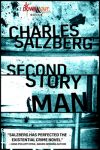 Charles Salzberg is author of the Shamus Award nominated Swann’s Last Song, Swann Dives In, Swann’s Lake of Despair, Swann’s Way Out, Devil in the Hole, named one of the best crime novels of the year by Suspense magazine and Second Story Man. His novella, “The Maybrick Affair” is included in the anthology, Three Strikes. He teaches writing at the New York Writers Workshop where he is a Founding Member, and he is on the board of MWA-NY.
Charles Salzberg is author of the Shamus Award nominated Swann’s Last Song, Swann Dives In, Swann’s Lake of Despair, Swann’s Way Out, Devil in the Hole, named one of the best crime novels of the year by Suspense magazine and Second Story Man. His novella, “The Maybrick Affair” is included in the anthology, Three Strikes. He teaches writing at the New York Writers Workshop where he is a Founding Member, and he is on the board of MWA-NY.
 Ann Simas lives in Oregon, but she is a Colorado girl at heart, having grown up in the Rocky Mountains. The author of 23 novels, one novella, and one short-story collection, she particularly likes to write a mix of mystery/thriller/suspense, with a love story and paranormal or supernatural elements. Three of her books have been Romance Writers of America Golden Heart Finalists. Ann is also an award-winning watercolorist and budding photographer who enjoys needlework and gardening in her spare time. She is her family’s “genealogist” and has been blessed with the opportunity to conduct first-hand research in Italy for both her writing and her family tree. The genealogy research from centuries-old documents, written in Italian, has been a supreme but gratifying and exciting challenge for her.
Ann Simas lives in Oregon, but she is a Colorado girl at heart, having grown up in the Rocky Mountains. The author of 23 novels, one novella, and one short-story collection, she particularly likes to write a mix of mystery/thriller/suspense, with a love story and paranormal or supernatural elements. Three of her books have been Romance Writers of America Golden Heart Finalists. Ann is also an award-winning watercolorist and budding photographer who enjoys needlework and gardening in her spare time. She is her family’s “genealogist” and has been blessed with the opportunity to conduct first-hand research in Italy for both her writing and her family tree. The genealogy research from centuries-old documents, written in Italian, has been a supreme but gratifying and exciting challenge for her.
 Linda Bennett Pennell has been in love with the past for as long as she can remember. Anything with a history, whether shabby or majestic, recent or ancient, instantly draws her in. It probably comes from being part of a large extended family that spanned several generations. Long summer afternoons on her grandmother’s porch or winter evenings gathered around the fireplace were filled with stories both entertaining and poignant. Of course, being set in the American South, those stories were also peopled by some very interesting characters, some of whom have found their way into Linda’s work.
Linda Bennett Pennell has been in love with the past for as long as she can remember. Anything with a history, whether shabby or majestic, recent or ancient, instantly draws her in. It probably comes from being part of a large extended family that spanned several generations. Long summer afternoons on her grandmother’s porch or winter evenings gathered around the fireplace were filled with stories both entertaining and poignant. Of course, being set in the American South, those stories were also peopled by some very interesting characters, some of whom have found their way into Linda’s work.
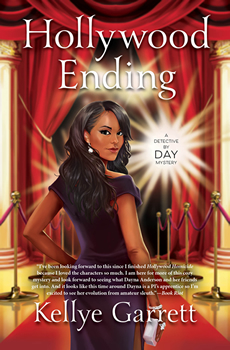 Kellye Garrett writes the Detective by Day mysteries about a semi-famous, mega-broke black actress who takes on the deadliest role of her life: Homicide Detective. The first, Hollywood Homicide, won the Agatha, Lefty and Independent Publisher “IPPY” awards for best first novel and is nominated for Anthony, Macavity, and Barry awards. The second, Hollywood Ending, will be released on August 8, 2018 from Midnight Ink. Prior to writing novels, Kellye spent eight years working in Hollywood, including a stint writing for Cold Case. She now works for a leading media company and serves on the Board of Directors for Sisters in Crime as the organization’s Publicity Liaison. You can learn more at KellyeGarrett.com.
Kellye Garrett writes the Detective by Day mysteries about a semi-famous, mega-broke black actress who takes on the deadliest role of her life: Homicide Detective. The first, Hollywood Homicide, won the Agatha, Lefty and Independent Publisher “IPPY” awards for best first novel and is nominated for Anthony, Macavity, and Barry awards. The second, Hollywood Ending, will be released on August 8, 2018 from Midnight Ink. Prior to writing novels, Kellye spent eight years working in Hollywood, including a stint writing for Cold Case. She now works for a leading media company and serves on the Board of Directors for Sisters in Crime as the organization’s Publicity Liaison. You can learn more at KellyeGarrett.com.
 Dr. Richard Mabry is a retired physician, now writing “medical mystery with heart.” His novels have garnered critical acclaim and been finalists for ACFW’s Carol Award, both the Romantic Times’ Inspirational Book of the Year and Reviewer’s Choice Awards, the Inspirational Readers Choice, and the Selah Award. He is a member of the American Christian Fiction Writers, the International Thriller Writers, the Christian Authors Network, and Novelists Inc.
Dr. Richard Mabry is a retired physician, now writing “medical mystery with heart.” His novels have garnered critical acclaim and been finalists for ACFW’s Carol Award, both the Romantic Times’ Inspirational Book of the Year and Reviewer’s Choice Awards, the Inspirational Readers Choice, and the Selah Award. He is a member of the American Christian Fiction Writers, the International Thriller Writers, the Christian Authors Network, and Novelists Inc.
 Ronie Kendig is an award-winning, bestselling author of over twenty titles. She grew up an army brat, and now she and her army-veteran husband live a short train ride from New York City with their children and retired military working dog.
Ronie Kendig is an award-winning, bestselling author of over twenty titles. She grew up an army brat, and now she and her army-veteran husband live a short train ride from New York City with their children and retired military working dog.
- LAST GIRL MISSING with K.L. Murphy - July 25, 2024
- CHILD OF DUST with Yigal Zur - July 25, 2024
- THE RAVENWOOD CONSPIRACY with Michael Siverling - July 19, 2024
